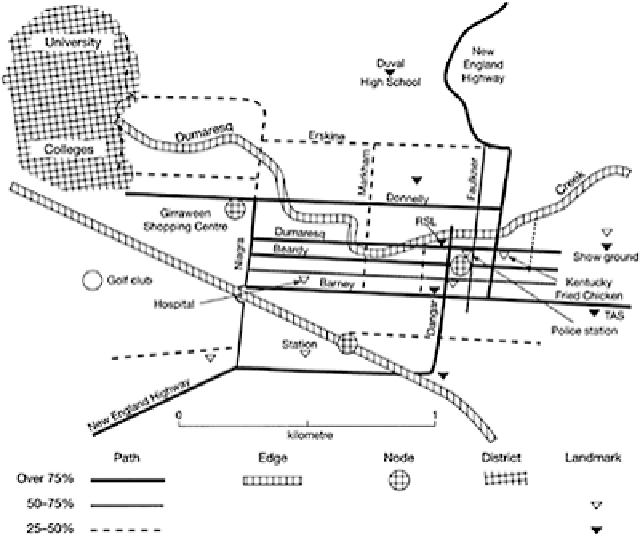Geography Reference
In-Depth Information
Figure 5.10:
The Lynchean landscape
of Armidale, New South Wales
Source:
after Walmesley and Lewis (1993:127)
Although there may sometimes be confusion among individuals regarding recognition of
Lynchean urban landscape elements, it does help researchers to understand how
individuals perceive the environment. Although researchers have criticised Lynch for the
small sample sizes of his work based on the cities of Boston, Los Angeles and Jersey City
with 60 responses, the real value is in the subsequent interest and research activity which
his work stimulated. In fact Lynch (1984) in a review of his work noted the problems of
implementing his findings in a public policy context, since many cities are quite
idiosyncratic in character and development. Even so, Walmesley and Lewis (1993)
review many of the issues associated with the methodology of imagery research and raise
a range of concerns about deriving generalisations from such results. Such studies do
have a role to play in understanding how people view, understand and synthesise the
complexity of urban landscapes into images of the environment. Nevertheless, criticisms
of spatial research of individual imagery of the environment are that it uses a 'borrowed
methodology, a potpourri of concepts, and liberal doses of borrowed theory' (Downs and
Stea 1977:3, cited in Walmesley and Lewis 1993). In a tourism context, Walmesley and
Jenkins (1992) observed that tourism cognitive mapping may offer a number of useful
insights into how tourists learn about new environments and, for this reason, it is
pertinent to consider how visitor behaviour may be influenced by the ability to acquire

